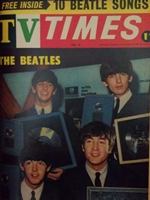 It is 50 years since The Beatles toured Australia. It was the biggest pop culture event to hit our shores in the 1960s — providing scenes of hysteria not seen again until ABBA came to Australia a decade later.
It is 50 years since The Beatles toured Australia. It was the biggest pop culture event to hit our shores in the 1960s — providing scenes of hysteria not seen again until ABBA came to Australia a decade later.
Beatlemania was everywhere in 1964. It was a rare week if TV Week and TV Times magazines, then the dominant barometers of popular culture, had failed to feature a front cover or report anything on the fab four. In the lead up to the Australian tour TV Times had featured special listings of Beatle lyrics. The magazine also ran a competition — Beaticles — where readers were invited to send in sketches of their own Beatle-inspired creations. “The more way-out your idea is the better, so long as it isn’t “sick”,” TV Times suggested to potential artists. The contest offered weekly prizes of a Beatles record with the grand prize of £50 worth of records of the winner’s choosing.
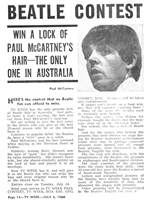 TV Week then upped the stakes with its Beatles contest: “Win a lock of Paul McCartney‘s hair!”
TV Week then upped the stakes with its Beatles contest: “Win a lock of Paul McCartney‘s hair!”
TV Week also published a book, cover-to-cover of nothing but The Beatles — “The Beatles in colour. The Beatles at home. The Beatles at play. What are the Beatles REALLY like? See a REAL Beatle hairdo!”
Inevitably with such public hysteria over the band’s arrival in Australia, the media clamoured for a piece of Beatles action — and it started before they had even touched down.
 Their arrival in Sydney, from Hong Kong, was scheduled for around 7.30am on Thursday 11 June. From 5.00am radio stations were already covering the scene of the relatively small group of 750 fans (and an estimated 400 police) who had gathered outside a rain-soaked Mascot airport from the night before. Sydney’s TCN9 was there to cover the event. The wonders of the coaxial cable meant that Melbourne viewers would also get to see the group’s arrival.
Their arrival in Sydney, from Hong Kong, was scheduled for around 7.30am on Thursday 11 June. From 5.00am radio stations were already covering the scene of the relatively small group of 750 fans (and an estimated 400 police) who had gathered outside a rain-soaked Mascot airport from the night before. Sydney’s TCN9 was there to cover the event. The wonders of the coaxial cable meant that Melbourne viewers would also get to see the group’s arrival.
Despite all the hype and the cheers of the enthusiastic crowd, the live TV broadcast of the Beatles arriving at Sydney failed to impress TV Times critic FC Kennedy:
| “Watching the arrival in Australia of The Beatles on TV was poor compensation for climbing out of bed before dawn. Though the technicians who brought in the outdoor broadcast worked a minor miracle, Sydney, that unpredictable city, let them down. An hour’s delay in the arrival of the Beatle aircraft left the producer with nothing to do but sweep the soggy airport. Occasionally, commentators Johnny O’Keefe and John Bailey quizzed bedraggled teenagers on how long they had waited and who was their favourite Beatle.
“I hung around my TV set until the Beatles had made one appearance on the hotel balcony in pouring rain. After that I switched off. Even with a tight roof over my head the telecast was too wet for me.” |
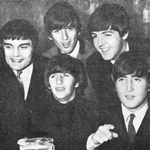 While The Beatles (including “fifth Beatle” Jimmy Nicol, filling in for drummer Ringo Starr who was delayed in joining the Australian tour due to illness) were having some rest in Sydney before heading to Adelaide to start their four-city tour, TV continued to feed the Beatlemania hype. ABC presented a half-hour special, B Day, narrated and produced by Kit Denton (father of Andrew Denton). B Day sought to analyse The Beatles’ trade marks, namely their mop-top hair and distinctive tunes, and interviewed fans as well as public officials charged with making their arrival in Sydney a success.
While The Beatles (including “fifth Beatle” Jimmy Nicol, filling in for drummer Ringo Starr who was delayed in joining the Australian tour due to illness) were having some rest in Sydney before heading to Adelaide to start their four-city tour, TV continued to feed the Beatlemania hype. ABC presented a half-hour special, B Day, narrated and produced by Kit Denton (father of Andrew Denton). B Day sought to analyse The Beatles’ trade marks, namely their mop-top hair and distinctive tunes, and interviewed fans as well as public officials charged with making their arrival in Sydney a success.
On Saturday evening ABC screened the special Beatles edition of British pop show Ready, Steady, Go, produced by Australian Robert Fleming for British channel Rediffusion London. In Melbourne, HSV7 had made a last minute program schedule change, with the one-hour special Around The Beatles, screening at 7.30pm. The Age previewed the program, also from Rediffusion, as “possibly the most entertaining show yet taped featuring the group”.
Seven also had two other Beatles specials ready to roll over the following nights — Sydney radio man Bob Rogers‘ half-hour report on The Beatles and the second British-produced Big Night Out With The Beatles special. (The first had aired in Australia some months earlier)
Sunday mid-afternoon saw The Beatles land in Melbourne. Both HSV7 and GTV9 had set up outside broadcasts to catch the first glimpse of the band’s arrival at Essendon Airport. Both channels also bumped afternoon programs from their regular timeslots to cover the band’s press conference at the Southern Cross Hotel, where an estimated 20,000 fans had gathered outside to see their pop star idols.
Having performed in Adelaide, Melbourne, Sydney and Brisbane, by the end of the month as their Australian tour was drawing to a close, Beatles member John Lennon was the speaker on ABC’s Guest Of Honour radio program. His speech, later printed in full in the ABC-published TV Times, covered various topics including the band’s formation, his home town of Liverpool, some of his artistic inspirations and highlights of the Australian tour:
“I thought I’d like to take this opportunity, because we’re coming to the end of this Australian trip and, you know, we’d just like to thank everybody — you know, from police to Lord Mayors. (Even though we were misquoted about not liking Lord Mayors, we do like them as much as everybody else, and they’re all very nice) And all the receptions we’ve been to were all well handled (which a lot of them aren’t sometimes). And we’d just like to thank everybody in Australia, because it seems as if we’ve met everybody or at least seen them outside a window, although we were disappointed we didn’t see any Aborigines. We just thank you all very much, and goodbye.”
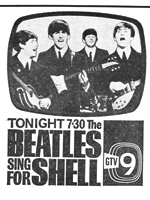 The third and final Melbourne concert was videotaped and later broadcast as the one-hour special The Beatles Sing For Shell, shown on the National Television Network (now the Nine Network) and regional stations early in July — just days after The Beatles had bid farewell to Australia.
The third and final Melbourne concert was videotaped and later broadcast as the one-hour special The Beatles Sing For Shell, shown on the National Television Network (now the Nine Network) and regional stations early in July — just days after The Beatles had bid farewell to Australia.
The Beatles Sing For Shell was later reported as one of the most-watched TV specials of the decade, averaging a rating of 53.5 (per cent of households) across both Sydney and Melbourne.
To commemorate the 50th anniversary of The Beatles’ only Australian tour, ABC is screening a special, When The Beatles Drove Us Wild, Tuesday 10 June, 8.30pm, ABC1.
Source: The Age, 11 June 1964, 15 June 1964. TV Week, 14 March 1964, 4 July 1964. TV Times, 24 June 1964, 8 July 1964. Australian TV: The First 25 Years, 1981.
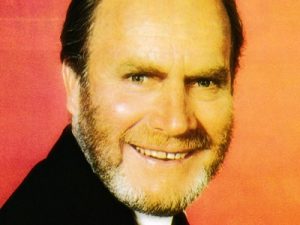
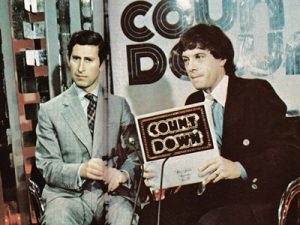
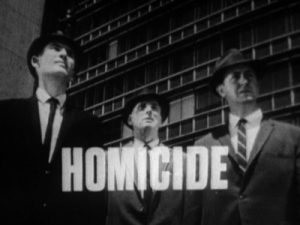
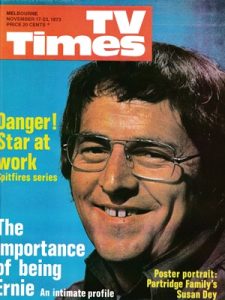
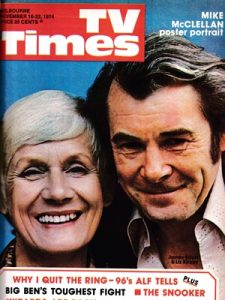
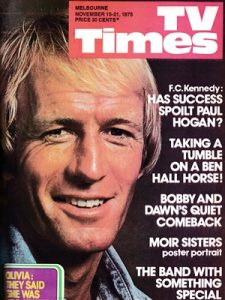
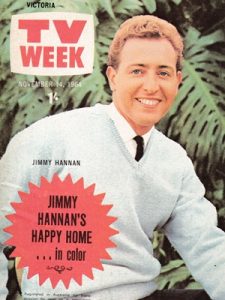
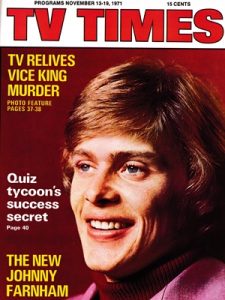
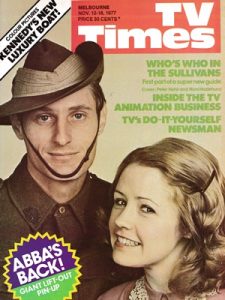
I’m doing a school major project on para-social relationships. Do you know anyone who was part of Beatlemania at the time, or any other information I might be able to use?